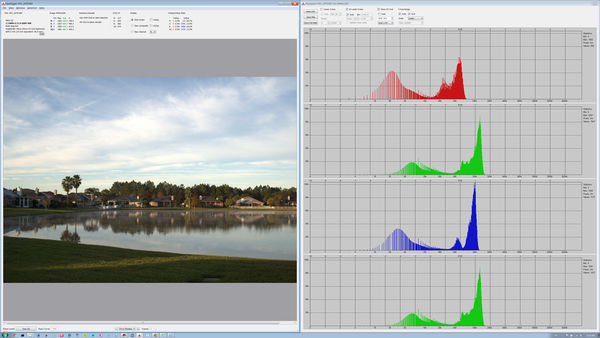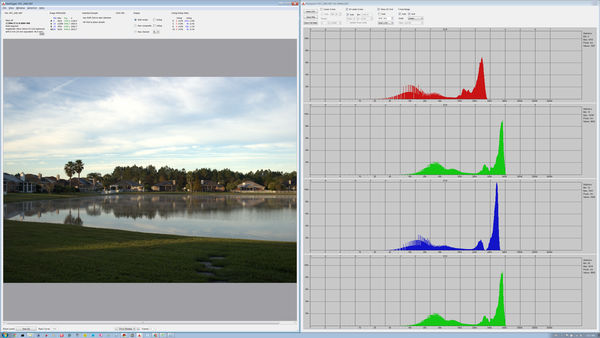ETTR vs. ISO Invariance
Dec 6, 2018 10:27:14 #
This morning I exposed two images on a Nikon Df (because the 16 MP files are smaller) to illustrate the difference between ETTR and a significantly lower exposure that relies on the camera's relatively good ISO invariance. Both images were exposed at ISO 400 and f/11. Only the shutter speed was different.
It was not yet broad daylight so the first one is clearly underexposed at a net EV of 15 (Sunny 16 is 14.33). The second image was exposed at a level just before the blinkies started to show (ETTR), a net EV of 12.67 or 2.33 stops brighter than the first image.
Feel free to download the second and third images and look for a material difference between them. The goal here is to get the same rendering of the sky.
In the next post I will show a B&W conversion.
It was not yet broad daylight so the first one is clearly underexposed at a net EV of 15 (Sunny 16 is 14.33). The second image was exposed at a level just before the blinkies started to show (ETTR), a net EV of 12.67 or 2.33 stops brighter than the first image.
Feel free to download the second and third images and look for a material difference between them. The goal here is to get the same rendering of the sky.
In the next post I will show a B&W conversion.
SOOC 1/1000 sec - Max raw value 1437
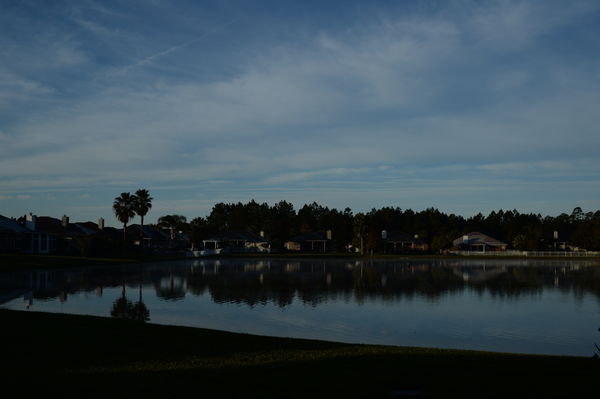
(Download)
SOOC 1/200 sec - Max raw value 8077
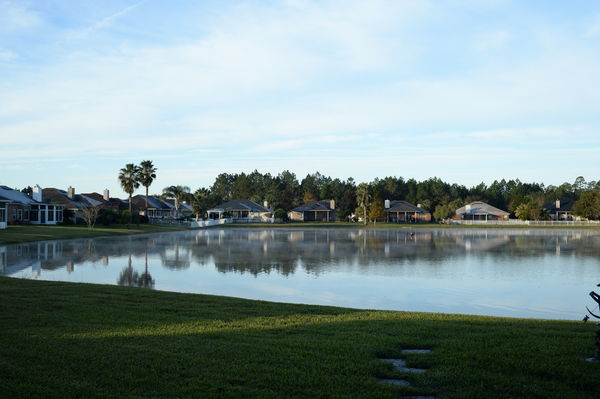
(Download)
The first image with exposure increased by 2.33 stops in Capture One Pro
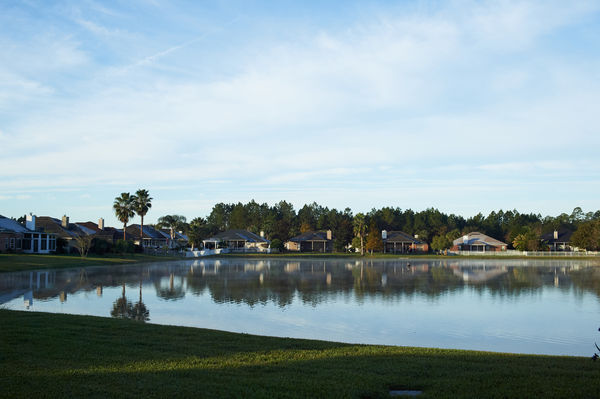
(Download)
Dec 6, 2018 10:30:46 #
Here are the images from the first post converted to B&W in Capture One Pro. To get the strongest effect in the sky I made the following selections for the B&W conversion:
Red +100
Blue -100
Yellow +100
Cyan -100
Green and Magenta 0
Red +100
Blue -100
Yellow +100
Cyan -100
Green and Magenta 0
Conversion of the darker image relying on ISO invariance
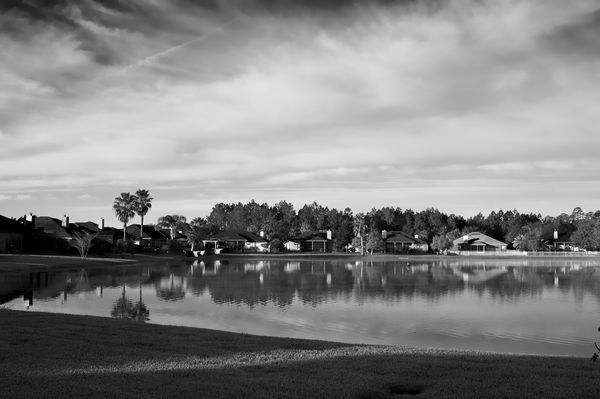
(Download)
Conversion of the ETTR image
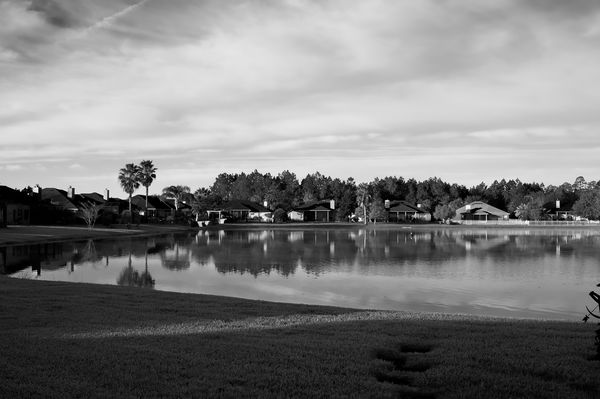
(Download)
Dec 6, 2018 10:39:38 #
The differences are negligible, but the 1/200 is cleaner in the details and the differences are visible at 100% when compared. I looked at the upper left corner of the color versions and the water touching the grass in the foreground, near the paver stones.
Dec 6, 2018 11:15:42 #
CHG_CANON wrote:
The differences are negligible, but the 1/200 is cleaner in the details and the differences are visible at 100% when compared. I looked at the upper left corner of the color versions and the water touching the grass in the foreground, near the paver stones.
As you said, the differences are negligible, particularly if you look only from a normal viewing distance and not at 100% or more from close up.
The camera was not on a tripod. To do a proper comparison you would need to slide the first image up until the tops of the palms appear in the same position. The goal was to get the sky to about the same values.
The water is a little trickier since the ripples are moving. But there is an difference in the luminance noise if you look at the reflection of the red brick on the water and on up to the other dark areas in the image.
Clearly, a lower ISO and a correspondingly longer exposure in both versions would have reduced or eliminated any of the noise visible at 400% from closeup.
Dec 6, 2018 11:26:32 #
selmslie wrote:
As you said, the differences are negligible, parti... (show quote)
I agree. After a bit of clean-up, you'd likely not see any difference. The faster shutter seems a bit sharper, but that's a shooting technique difference in a quick compare rather than a technical difference in the method of capture and post processing.
Dec 6, 2018 11:38:43 #
CHG_CANON wrote:
I agree. After a bit of clean-up, you'd likely not see any difference. The faster shutter seems a bit sharper, but that's a shooting technique difference in a quick compare rather than a technical difference in the method of capture and post processing.
Broad daylight - two more stops of light - would have also helped a lot.
A better choice in this case would have been to use a tripod, a lower ISO and more exposure. Then you would not have been able to find any noise, even at 400%.
Dec 6, 2018 14:08:15 #
selmslie wrote:
Broad daylight - two more stops of light - would have also helped a lot.
A better choice in this case would have been to use a tripod, a lower ISO and more exposure. Then you would not have been able to find any noise, even at 400%.
A better choice in this case would have been to use a tripod, a lower ISO and more exposure. Then you would not have been able to find any noise, even at 400%.
Here is an example of a RawDigger analysis of an image where the two green channels and the blue channel are just starting to blow out. In the left panel you will see that the total number of unrecoverable pixels is about 22k. In the right panel you can see that a substantial portion of the green and blue histograms are in the 8000-16000 range and, except for the 22k pixels already mentioned, they can be recovered by a combination of exposure reduction and highlight recovery.
The suggested net EV for this scene (Typical scene, cloudy bright, no shadows) is 13 so the exposure used (ISO 200 1/60@f/11 = EV 12) was only 1 stop brighter. Nevertheless, that was too much.
RawDigger analysis
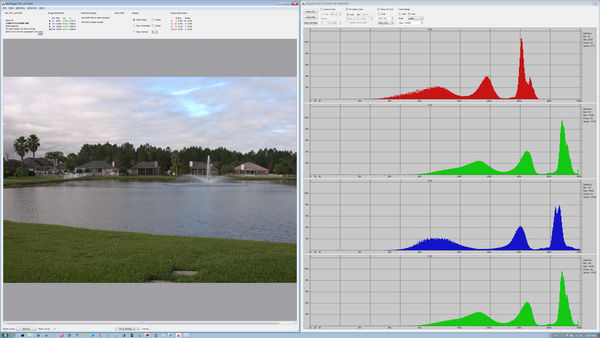
(Download)
SOOC
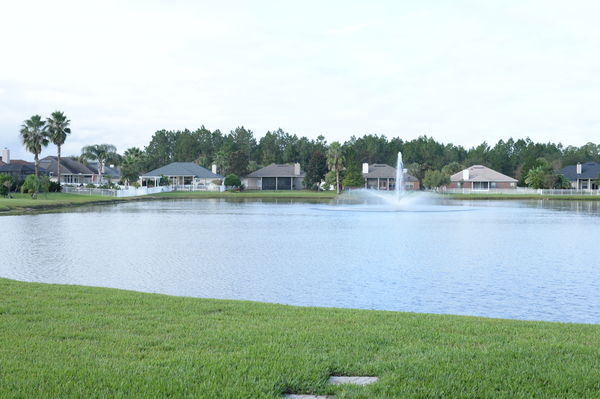
(Download)
Adjusted only the overall exposure minus 1 stop
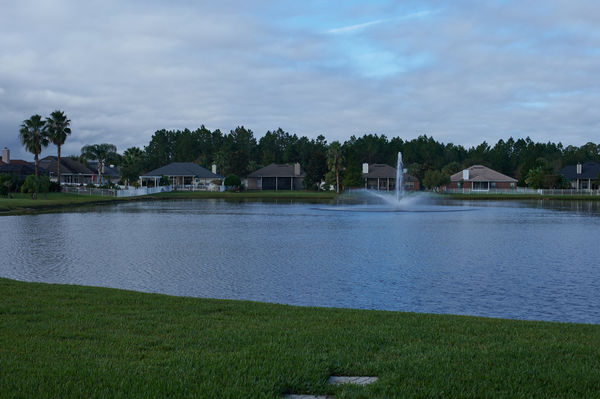
(Download)
Dec 6, 2018 20:24:33 #
I would be interested to see the comparative histograms of the 2nd and 3rd images in your original post. Also, do you have any comparable images where the initial SOOC underexposure was more than 2 stops? I’m interested to see if there are any changes in spectral distribution between the original underexposed shots and the image brought up in post, especially at more extreme underexposures.
Thanks
Thanks
Dec 6, 2018 21:39:39 #
TriX wrote:
I would be interested to see the comparative histograms of the 2nd and 3rd images in your original post. ...
Here are the two plots. The longer exposure (1/200 sec) has a histogram that reaches a raw value of 8000 - ETTR - while the shorter exposure (1/1000) only gets to about 1600. Since middle gray is about 1414, it's not surprising that the darker image is noisier. However, what is significant is that the tonality of both images is about the same when they are equalized by a change in the gain.
This comparison is stems from a discussion about landscape imaging. As a landscape image, the proper course would be to use base ISO (100) and a tripod. If I had done so, I could have achieved the same tonality and the noise would have been virtually eliminated by an exposure of 1/100 @ f/11 ISO 100 or 1/200 @ f/8. The green histograms would have reached only the 4000 level (one stop short of ETTR) but the additional exposure would have resulted in half as much noise as the 1/200 sec image.
Your second question would take more time to research but the short answer is that I don't really recommend severe underexposure since there is an obvious noise penalty. However, normal exposure at low ISO is generally the best option. In this case, ETTR would add only 1 stop at 1/50 sec and EBTR 2 stops at 1/25 sec. ETTR/EBTR would provide virtually no visible benefit.
Dec 6, 2018 21:49:52 #
selmslie wrote:
Here are the two plots. The longer exposure (1/20... (show quote)
Thanks Scotty. I expected the noise, I was just interested in the distribution. I’ve seen some comparative composite histograms of shots 5 stops underexposed and pulled up in post, and the histograms were noticably different, but I haven’t seen the same tests with raw digger.
Dec 6, 2018 21:52:39 #
TriX wrote:
Thanks Scotty. I expected the noise, I was just interested in the distribution. I’ve seen some comparative composite histograms of shots 5 stops underexposed and pulled up in post, and the histograms were noticably different, but I haven’t seen the same tests with raw digger.
Because the camera was not on a tripod, the two scenes are not exactly the same - more sky and less grass in the first image. But they are close enough for this comparison.
Dec 7, 2018 09:59:10 #
TriX wrote:
... do you have any comparable images where the initial SOOC underexposure was more than 2 stops? I’m interested to see if there are any changes in spectral distribution between the original underexposed shots and the image brought up in post, especially at more extreme underexposures.
Thanks
Thanks
I found an example of severe underexposure. I posted this earlier but I'll save you the effort of searching for it.
You might expect to see a lot of noise from 4 stops of underexposure, but you don't. And the RawDigger histograms imply that the image should be a disaster, but it isn't.
This has a lot to do with the subject matter. There is a lot of tiny detail and hardly any place for the noise to become apparent.
This scene was captured in a heavy overcast. It called for a net EV of 12, not 16 as I exposed it for this test.
I don't recommend such sever underexposure but, as you can see, it's a lot easier to recover from than from a severe overexposure as I will show next.
SOOC underexposed by 4 stios - ISO 200 1/1000 @ f/11 - EV 16
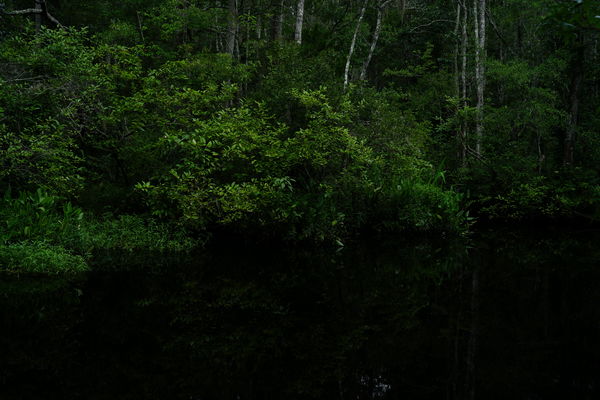
(Download)
After 4 stop exoisure adjustment in Capture One Pro
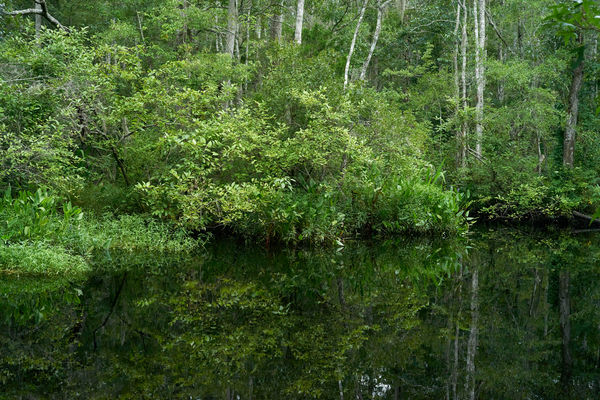
(Download)
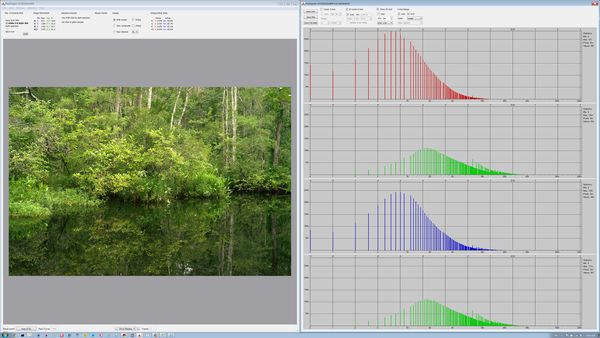
(Download)
Dec 7, 2018 10:23:36 #
I did this test in April, 2016. All four images were exposed for 1/50@ f/8. There was a heavy overcast that called for a net EV of about 12. I started with 11.67.
As you can see, the "normal" exposure is not quite ETTR but 1 stop more exposure and it definitely becomes EBTR with a substantial portion of the scene within the 8000-16000 range. With 2 stops more, the highlights are definitely blowing out.
The the next two images were developed in Capture One Pro.
As you can see, the "normal" exposure is not quite ETTR but 1 stop more exposure and it definitely becomes EBTR with a substantial portion of the scene within the 8000-16000 range. With 2 stops more, the highlights are definitely blowing out.
The the next two images were developed in Capture One Pro.
ISO 100 - EV 11.67
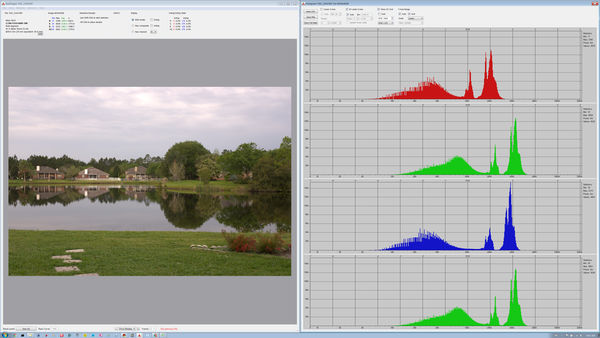
(Download)
ISO 200 - EV 10.67 - EBTR
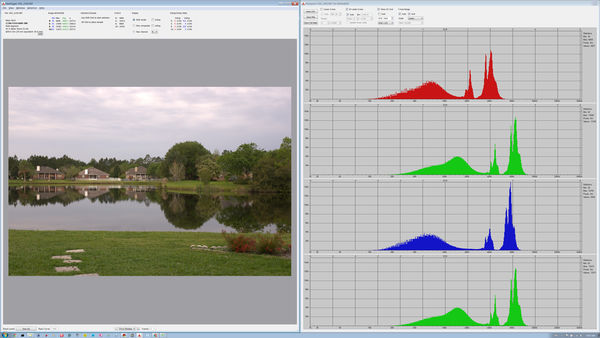
(Download)
ISO 400 - EV 9.67 - Blown highlights
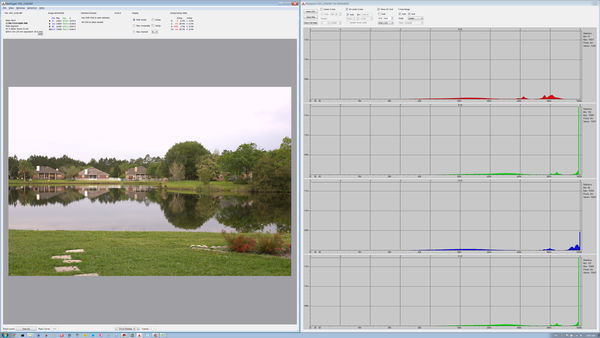
(Download)
ISO 800 - EV 8.67 - Mid-tones suffering
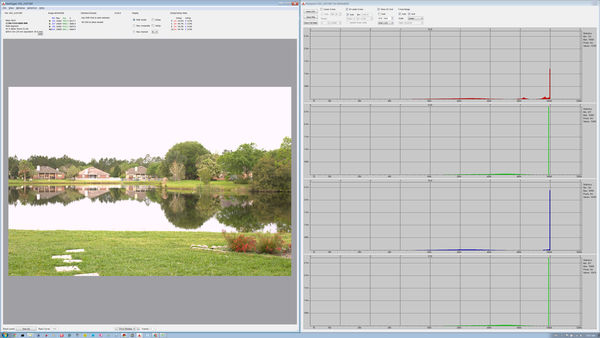
(Download)
ISO 100 - No exposure adjustment
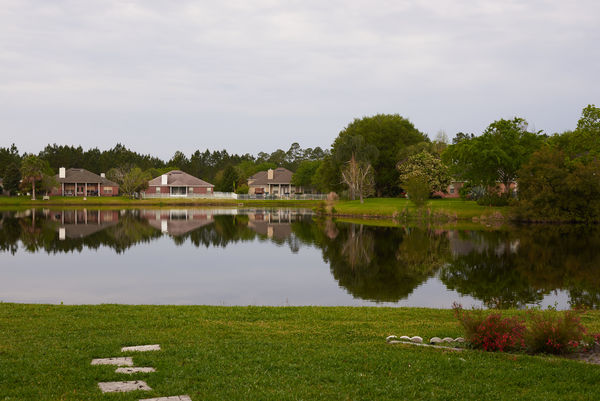
(Download)
ISO 200 - EBTR - Minus 1 exposure adjustment
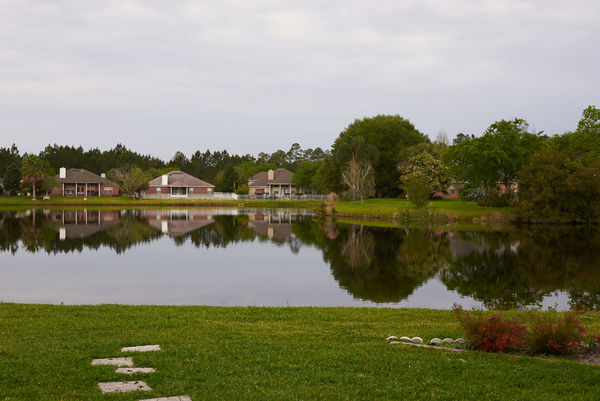
(Download)
Dec 7, 2018 10:43:14 #
selmslie wrote:
I found an example of severe underexposure. I po... (show quote)
Thanks Scotty, I appreciate it. i’d run my own tests, but my Canon is definitely NOT ISO invariant (don’t know about my Fuji). I definitely agree that going too far and blowing highlights is a no-no, and I agree that you can “save” an accidentally underexposed shot in post with an ISO invariant Camera, and finally, I certainly understand one of the previous posts about leaving some headroom to prevent blowing highlights if you’re unsure of your metering and exactly how far you can go to the right with your particular camera. What I’m interested in exploring is the idea that with an “ISO invariant” Camera, you can always shoot at base ISO, even 5-6 stops underexposed, and bring up in post with no I’ll effects. I understand that’s not what you’re proposing, but it has been suggested by others in the past (btw, I don’t agree). When that poster posted images, you could definitely see a change in the RGB spectral distribution in the histogram (not just the levels) as the underexposure got worse, and I’m wondering if you’ve seen the same thing in any of your tests.
Dec 7, 2018 11:11:11 #
TriX wrote:
Thanks Scotty, I appreciate it. i’d run my own tests, but my Canon is definitely NOT ISO invariant (don’t know about my Fuji). ...
I am always mindful of the fact that Canon is using a different approach than Nikon or Sony. It's a challenge to Canon users and they will have to do a lot of their own testing.
But there is a bright side (pun intended). Shooting at low ISO forces you to use a generous exposure and noise can be avoided.
What I would like to know from any Canon user out there is whether the blinkies are as predictable as they are with Nikon and Sony. It should be a relatively simple test - expose a scene where they just barely begin and use RawDigger to determine the number saved in the raw file. For Nikon and Sony it appears to be very close to 8192 (14-bit).
Once you know where they start, ETTR should be a piece of cake.
If you want to reply, then register here. Registration is free and your account is created instantly, so you can post right away.



